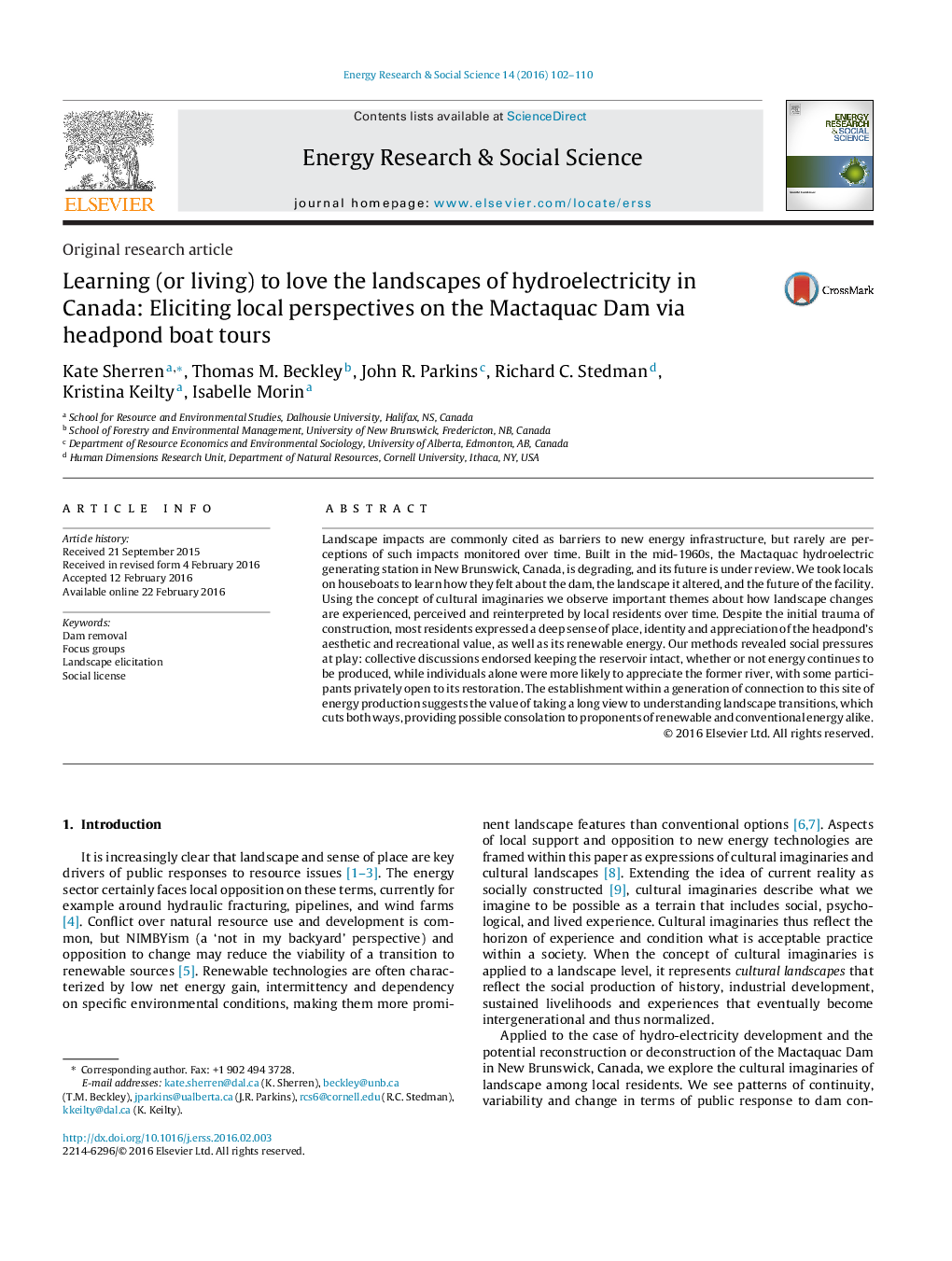| Article ID | Journal | Published Year | Pages | File Type |
|---|---|---|---|---|
| 6558187 | Energy Research & Social Science | 2016 | 9 Pages |
Abstract
Landscape impacts are commonly cited as barriers to new energy infrastructure, but rarely are perceptions of such impacts monitored over time. Built in the mid-1960s, the Mactaquac hydroelectric generating station in New Brunswick, Canada, is degrading, and its future is under review. We took locals on houseboats to learn how they felt about the dam, the landscape it altered, and the future of the facility. Using the concept of cultural imaginaries we observe important themes about how landscape changes are experienced, perceived and reinterpreted by local residents over time. Despite the initial trauma of construction, most residents expressed a deep sense of place, identity and appreciation of the headpond's aesthetic and recreational value, as well as its renewable energy. Our methods revealed social pressures at play: collective discussions endorsed keeping the reservoir intact, whether or not energy continues to be produced, while individuals alone were more likely to appreciate the former river, with some participants privately open to its restoration. The establishment within a generation of connection to this site of energy production suggests the value of taking a long view to understanding landscape transitions, which cuts both ways, providing possible consolation to proponents of renewable and conventional energy alike.
Related Topics
Physical Sciences and Engineering
Energy
Energy (General)
Authors
Kate Sherren, Thomas M. Beckley, John R. Parkins, Richard C. Stedman, Kristina Keilty, Isabelle Morin,
